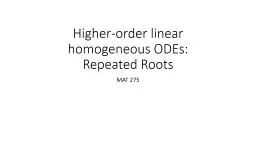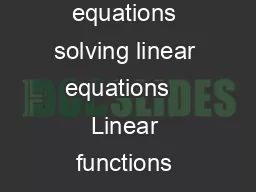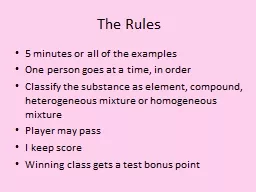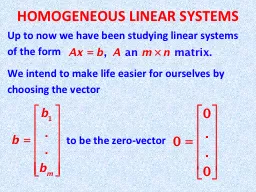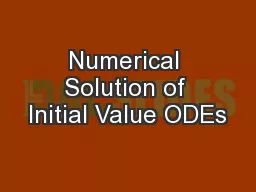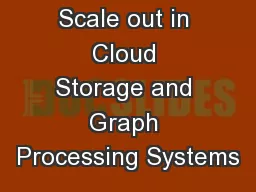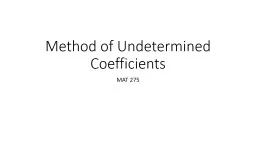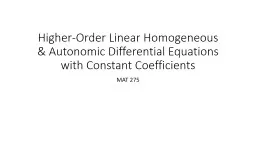PPT-Higher-order linear homogeneous ODEs:
Author : pasty-toler | Published Date : 2018-11-21
Repeated Roots MAT 275 Consider the secondorder differential equation Its auxiliary polynomial equation is which factors as Thus is a root with multiplicity
Presentation Embed Code
Download Presentation
Download Presentation The PPT/PDF document "Higher-order linear homogeneous ODEs:" is the property of its rightful owner. Permission is granted to download and print the materials on this website for personal, non-commercial use only, and to display it on your personal computer provided you do not modify the materials and that you retain all copyright notices contained in the materials. By downloading content from our website, you accept the terms of this agreement.
Higher-order linear homogeneous ODEs:: Transcript
Download Rules Of Document
"Higher-order linear homogeneous ODEs:"The content belongs to its owner. You may download and print it for personal use, without modification, and keep all copyright notices. By downloading, you agree to these terms.
Related Documents

